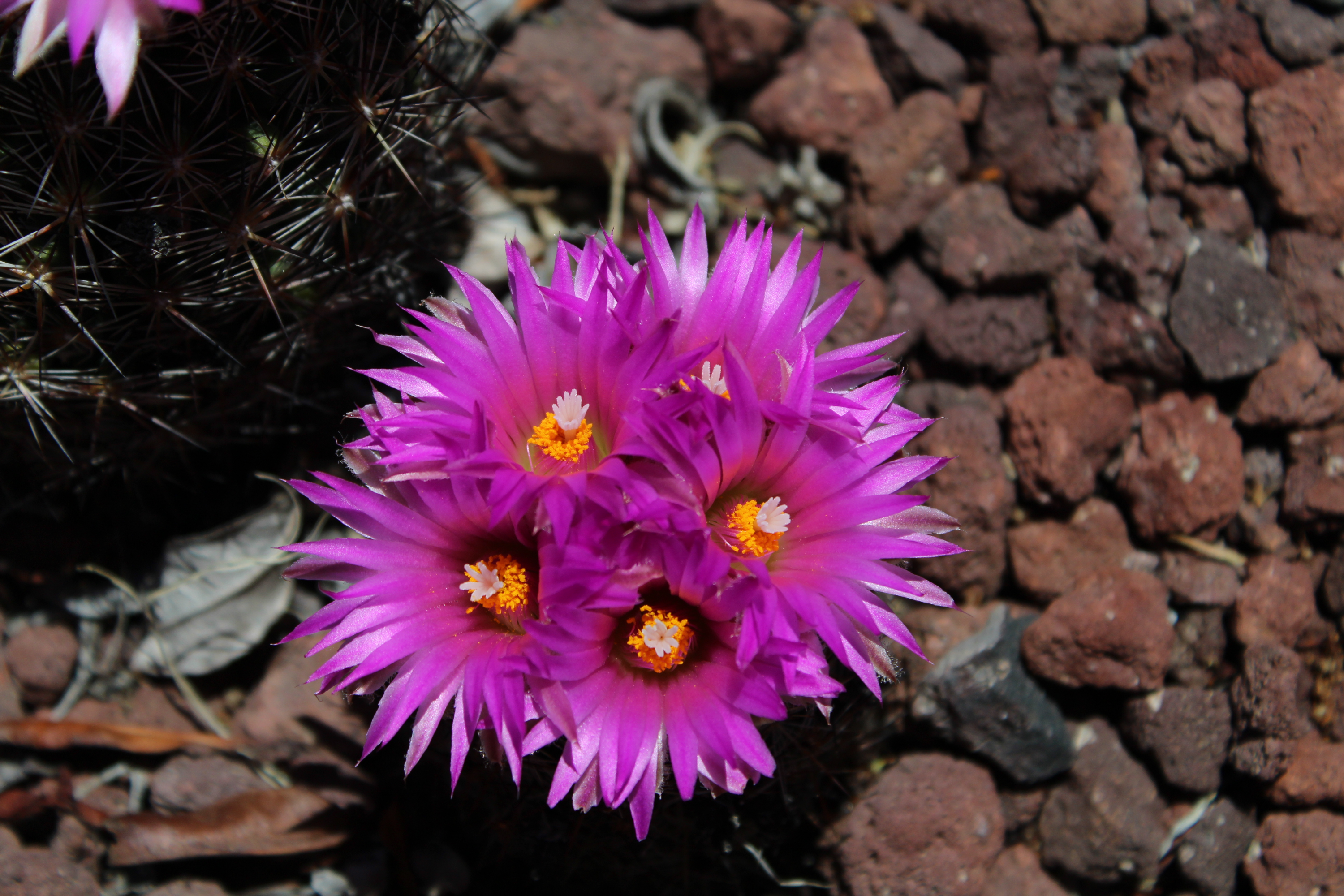Texas cone cactus
(Neolloydia conoidea)

Description
Neolloydia conoidea, common name Texas cone cactus or Chihuahuan beehive, is a species of cactus native to western Texas and to the Mexican states of Coahuila, Durango, Nuevo León, San Luis Potosí, Tamaulipas, and Zacatecas. It is a part of the Chihuahuan Desert desert scrub and the Tamaulipan thorn scrub. Neolloydia conoidea is an unbranched cylindrical cactus up to 24 cm (9.6 inches) tall and up to 8 cm (3.2 inches) in diameter. Outer tepals of the flowers are whitish with green midveins; inner tepals bright pink-rose to magenta. Fruits are pale yellow-olive with black seeds. Neolloydia is a genus of cacti. The genus is uniquely found in the dry scrub areas of southern Texas (Big Bend) and the Chihuahua Desert of Northeast Mexico. The genus was first erected by Britton & Rose in 1922 in order to classify three uncomfortable species formerly placed in the genus Mammillaria (N. conoidea, N. ceratites, and N. grandiflora). A fourth species was added in 1923 (N. texensis). But it was not until 1948 that a fifth and final species was added by Backeberg (N. matehualensis). Since then, Neolloydia has been a dumping ground for species from such diverse genera as Mammillaria, Coryphantha, Escobaria, Echinomastus, Cumarinia, and Thelocactus. It was not until Glass and Foster (1977) showed that there are very few botanical differences between Turbinicarpus and Gymnocactus that the definition of the genus Neolloydia began to take shape. Their work was followed up by John and Jan Říha (1981) and finally by Anderson in 1986. It now seems that Anderson's work on the Neolloydia complex is the generally accepted view.
Taxonomic tree:







